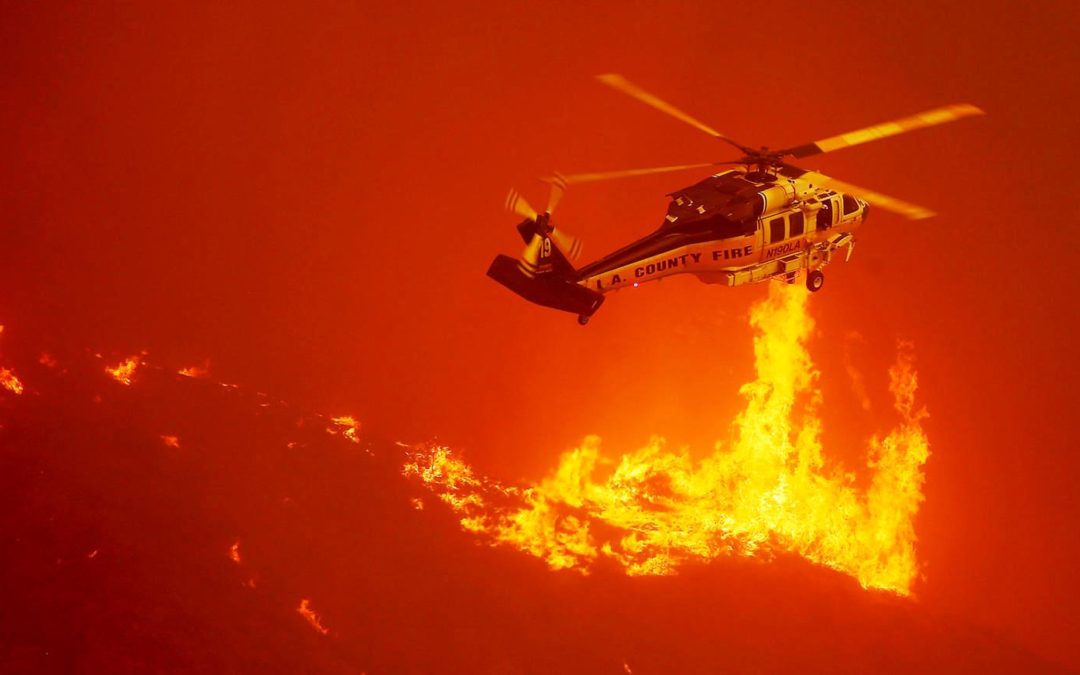Firefighting
With the increase in the number of wild fires, helicopters equipped with the correct mission equipment can be important firefighting resources. These helicopters, especially the recently added UH-60 Black Hawks, have the ability to deliver large quantities of water (also known as the aerial dispensing of liquids or ADL) for fire suppression.
As part of a series of articles on how mission equipment impacts the role of a UH-60 helicopter, Skycore Aviaiton describes the assortment of mission equipment used in helicopter water-dropping operations. The exact choice of equipment employed varies depending on location of fire, weather conditions, helicopter configuration and firefighting strategy.
Helicopters have the ability to drop liquids from a belly tank or suspended bucket. We will begin our analysis reviewing the bucket.
Bucket
A helicopter bucket is suspended on a cable underneath a helicopter to deliver liquids for aerial fire suppression. Today, the majority of helicopters utilize the Bambi Bucket for firefighting. It’s lightweight, strong and flexible. The Bambi Bucket uses gravity to open its dump valve. This valve is controlled by the helicopter crew with practically no electrical power. It can be hooked up to any helicopter using a standard power plug.
This ‘plug-n-play’ capability allows the Bambi Bucket to be used by different helicopters to deliver a solid column of water or foam on target. When the helicopter hovers over the position, the crew releases the water (referred to as a drop) to suppress the fire. To refill the bucket the helicopter hovers over a water source such as a lake, river, reservoir or tank and lowers the bucket into the water. An alternative is refilling the bucket with water siphoned from a portable tank through a hanging snorkel.
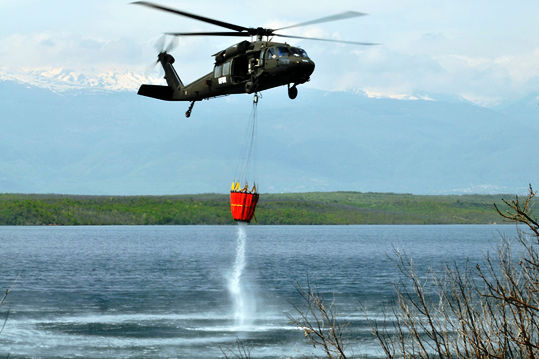
UH-60 Black Hawk filling its Bambi Bucket
Internal Tank with Snorkel
Aerial firefighters also use internal water tanks to extinguish fires. The internal tanks use a pump system to draw water through a snorkel into an on board holding tank from a lake or river. The tanks carry fire retardant made of a slurry mix a chemical salt compound, water, clay or a gum- thickening agent, and a coloring agent. These tanks release their load in single or multiple drops depending on the demands of the mission.
Drops from helicopters fitted with internal tanks can also occur in high wind situations where buckets are less effective. When there’s a safety concern or restrictions on carrying external loads over roads and populated areas, firefighters may choose internal tanks because buckets could accidentally release or fall on the way to a fire,
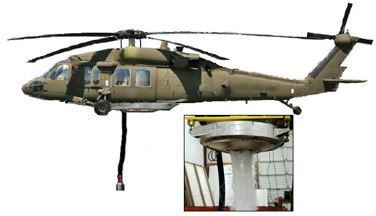
UH-60 with firefighting mission equipment
Night Vision Device
Night vision devices allow firefighting at night, when fire intensity has weakened from increased humidity and decreased temperatures and winds. Using Night Vision Goggles (NVGs), crews can identify hot spots or prevent a smoldering fire from burning out of control. Night vision systems also increase the accuracy of night drops and enable night rescues.
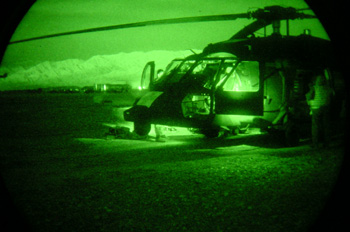
Black Hawk helicopter with Night Vision technology
Cargo Hook
Although low-tech and basic in nature, cargo hooks are essential firefighting mission equipment. A cargo hook, mounted underneath the helicopter, enables a helicopter to carry external loads, such as a bucket, during flight. Using a cargo hook, a Black Hawk UH-60L has a 9,000 lb sling load cargo capacity. The Black Hawk provides alternatives on how the cargo hook is released. A pilot can release the load electronically or a crew chief can release it manually depending on circumstances.
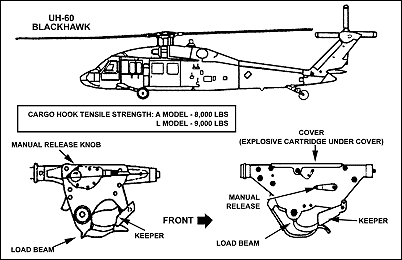
UH-60 Black Hawk cargo hook diagram
Skycore Aviation is an international helicopter personnel services and UH-60 Black Hawk provider (www.blackhawk360.com). Our knowledge and experience enable Skycore to provide personnel and turnkey solutions for helicopter programs tailored to meet our customer’s operations, maintenance and training needs. To stay atop of the rotary wing industry, follow us on LinkedIn, Twitter, Facebook and Pinterest.

